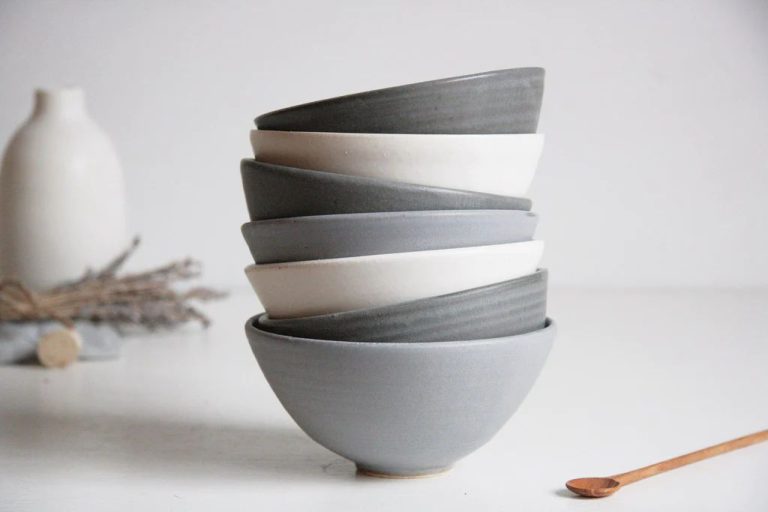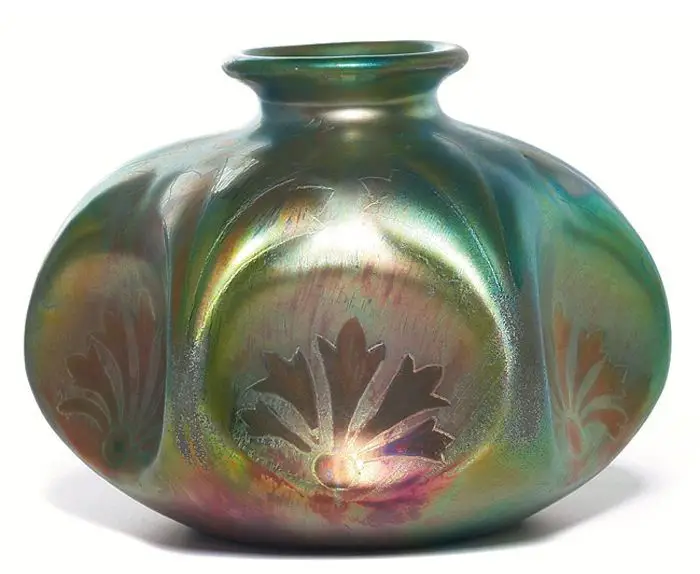What Material Are Incense Holders?
Incense holders, also known as incense burners, are containers designed to hold incense. Incense holders allow the incense to smolder and release fragrance without spreading ash. They come in a variety of shapes and sizes and are made from many different materials.
Some of the most common materials used to make incense holders include clay, wood, glass, metal, stone, ceramic, crystal and more. Each material provides its own look and feel and affects the way the incense burns. For example, ceramic incense burners retain heat well while metal ones allow the incense to burn faster due to increased airflow.
In the following sections, we’ll take a closer look at some of the most popular materials used to make incense holders and discuss the advantages and considerations of each.
Clay
Clay is one of the most common materials used to make incense holders. There are several types of clay that can be used:
Terracotta – This natural clay is often used to create incense burners and holders. Terracotta has an earthy reddish-brown color. It’s an affordable and accessible material. However, terracotta can be fragile if thin.
Stoneware – Denser and less porous than terracotta, stoneware clay is very durable. It can withstand high temperatures. Stoneware has a grayish color and smooth surface when fired. The downside is stoneware can be heavier than other clays.
Porcelain – Porcelain clay produces white, translucent incense holders that are thin, lightweight and delicate. This material is fired at very high temperatures. Porcelain can chip and break easily, so it requires careful handling.
Clay incense holders have some advantages. Clay is an affordable, abundant, and versatile material that can be molded into any shape and style. It’s also naturally heat-resistant. However, clay holders are breakable, especially thin or delicate porcelain types. They can also gradually absorb incense scents and oils over time.
Examples of beautiful clay incense burners include Indian terracotta holders, Chinese porcelain censers, and glazed stoneware designs from Thailand. With myriad colors and patterns, clay allows artisans to create unique incense vessels.
Wood
Wood is a classic material used to create incense holders. Its natural beauty and variation make it a popular choice. There are many types of wood that can be used:
- Sandalwood – This fragrant wood is actually the source of the incense ingredients. Sandalwood incense holders enhance the scent.
- Teak – A tropical hardwood that is weather-resistant. It has an attractive grain and golden color.
- Bamboo – A fast growing grass that is sustainable. Bamboo is lightweight yet sturdy.
- Maple – Hard maple is smooth and dense. It can be carved into intricate designs.
- Cedar – Has a sweet woody aroma. Cedar is naturally insect repellent.
Wood has many benefits for incense holders:
- It is an organic, natural material that complements incense.
- Can be carved into a wide range of shapes and designs.
- Provides a smooth surface for burning incense.
- Absorbs scents nicely over time.
There are some downsides to wood holders:
- Not as durable as metal or glass.
- Can be damaged by water and heat from burning incense.
- May require occasional oiling or treating to maintain.
Overall wood is one of the most popular materials due to its versatility, sustainability, and natural appeal. Cedar, teak, and sandalwood are excellent choices for handcrafted incense holders with timeless beauty.
Glass
Glass is a popular material for incense holders due to its sleek and modern aesthetic. There are several types of glass that are commonly used:
- Soda-lime glass – This is the most common type of glass. It’s lightweight, durable, and inexpensive to produce.
- Borosilicate glass – Known for its very low coefficient of thermal expansion. This makes it resistant to thermal shock, allowing it to withstand rapid temperature changes.
- Lead glass – Typically contains 18–40% lead oxide, resulting in a crystal-like appearance. Higher lead content increases brilliance and refractive index.
The pros of glass incense holders include:
- Aesthetically pleasing – Glass has a clean, elegant look that matches both traditional and modern decors.
- Allows aroma to permeate – The open design doesn’t trap fragrance like some materials.
- Easy to clean – Smooth glass surfaces can be wiped clean with little effort.
The cons of glass include:
- Prone to breaking – Glass can crack or shatter if dropped.
- Retains heat – Glass can get hot when holding burning incense.
- High maintenance – Shows fingerprints, dust, etc. Needs frequent polishing.
Examples of popular glass incense holders are spiral glass cone burners and minimalist cube-shaped holders. The translucence of glass creates an attractive glow when lit incense is placed inside. Overall, glass is a simple yet elegant choice for incense display.
Metal
Metal is a popular material used to create incense holders due to its durability and ability to withstand high temperatures. Some common metals used for incense holders include brass, iron, steel, copper, and bronze.
Metals like brass and bronze have an antique look that can complement traditional decor. Iron and steel incense holders have an industrial aesthetic. Copper incense holders will develop a patina over time.
The pros of metal incense holders are that they are very durable, heat-resistant, and long-lasting. The cons are that metal can conduct heat, so holders may get hot to the touch when in use. Metals like iron can rust if not properly cared for.
Some examples of iconic metal incense holders include:
- Lotus flower brass holders from India
- Wrought iron stands from Morocco
- Hammered copper cups from Turkey
- Cast iron pagodas from China
With proper care, a metal incense burner can become a treasured heirloom passed down for generations. Their durability makes metal holders a practical option for frequent incense use.
Stone
Stone is a popular material for incense holders because of its natural beauty and durability. The type of stone used depends on factors like availability, workability, and aesthetics.
Common types of stone used for incense holders include:
- Marble – Elegant and smooth, good for carved holders
- Slate – Layered and textured, nice for burners
- Sandstone – Natural variations in color, used for shaped holders
- Alabaster – Soft and easy to carve, ideal for ornate holders
- Granite – Hard and durable, good for basic geometric shapes
Stone incense holders have several benefits. Stone is very durable and long-lasting. It has thermal mass, absorbing and radiating heat slowly, which helps distribute incense smoke. The natural patterns and colors of stone make each piece unique. Stone is also easy to clean.
On the downside, stone can be heavy. Carving intricate designs in hard stones like granite can be difficult. Porous stones like sandstone may absorb fragrance oils. Stone incense holders can also be prone to cracking if exposed to rapid temperature changes.
Overall, the natural elegance and longevity of stone makes it a top choice. Popular stone incense holders include carved alabaster urns, sandstone pyramids with etched symbols, and simple granite slabs with small hollows to hold incense cones.
Ceramic
Ceramic is one of the most common materials used to create incense holders. There are several types of ceramics that are suitable for incense holders including earthenware, stoneware, and porcelain.
Earthenware is made from clay fired at lower temperatures and tends to be more porous and fragile. It comes in natural clay colors like terracotta as well as glazed varieties. Stoneware is fired at higher temperatures, making it denser and more durable. It also comes in natural and glazed options. Porcelain is the finest ceramic, fired at the highest temperatures to create a smooth, durable, and translucent material that is commonly glazed.
Ceramic incense holders have several benefits. They can withstand high temperatures needed for burning incense. Glazed ceramics in particular are non-porous and easy to clean. Ceramics also come in endless shapes, sizes, colors and designs to suit any décor. On the downside, unglazed or porous ceramics may absorb incense oils and can be more difficult to clean. Ceramic is also breakable if dropped.
Some beautiful examples of ceramic incense holders include hand-painted porcelain boxes and vases from China, intricate mosaic tile holders from Mexico, and modern glazed ceramic burners in bold colors and shapes.
Crystal
Crystal is a popular material for incense holders because of its natural beauty and perceived healing properties. Clear quartz crystal is most commonly used, but amethyst, citrine, and rose quartz are also popular choices. The main types of crystal incense holders are:
- Natural crystal points – These showcase the natural shape of a crystal point.
- Carved crystal – Crystal carved and polished into decorative shapes and designs.
- Crystal bowls – Natural or man-made crystal bowls, sometimes carved.
The main benefits of crystal incense holders are:
- They amplify the energy of incense due to the vibrational properties of crystal.
- They have a beautiful, high-end aesthetic.
- They are associated with healing, meditation, and spirituality.
The downsides are:
- Natural crystal can be expensive.
- Carved and shaped crystal is more fragile.
- The designs may be more simple compared to other materials.
Beautiful examples are natural quartz point holders, which showcase the multifaceted termination of a quartz crystal. Elegant carved crystal lotus flower holders are also popular. For incense ceremonies, wide crystal bowls that allow smoke to billow are preferred.
Comparison of Incense Holder Materials
When choosing an incense holder material, there are pros and cons to each option:
Clay
Pros: Clay is an affordable and accessible material. It comes in various colors and can be molded into diverse shapes and styles. Clay absorbs scent well.
Cons: Clay is fragile and can chip or crack easily. It requires more careful handling.
Wood
Pros: Wood is natural and attractive. It’s a renewable resource and available in many varieties. Wood also absorbs and enhances fragrance.
Cons: Wood can be flammable. It’s important to seal and protect it from heat damage. Over time, wood can warp or rot.
Recommendation
For frequent use, durable materials like metal, stone, or glazed ceramics may be best. For occasional use, more decorative and absorbent materials like clay or wood can provide a nice sensory experience. Consider your needs for appearance, durability, and functionality when choosing an incense holder material.
Conclusion
In summary, there are many different materials that can be used to make incense holders, each with their own unique properties. Clay is an inexpensive and easy to mold option. Wood can provide beautiful natural patterns and aromas that complement incense. Glass allows visibility of smoke and can have decorative designs. Metals like brass are sturdy and have an elegant shine. Stones like marble give a minimalist and sophisticated look. Ceramic has bright glazes and patterns baked in. Crystal emits energies and reflects light.
When choosing an incense holder material, consider the visual aesthetic you want, as well as practical factors like durability and cost. Think about how the material’s properties will interact with the incense smoke. Some options like wood and clay are more porous and will absorb fragrance over time. Glass, metal and stone will not retain scents or stain as easily. Ultimately the “best” material is a personal preference based on your priorities, style and setting.
With so many beautiful and functional choices available, you’re sure to find an incense holder material that perfectly suits your needs.




